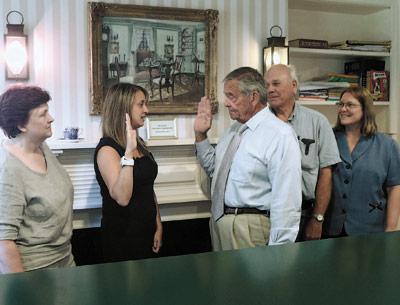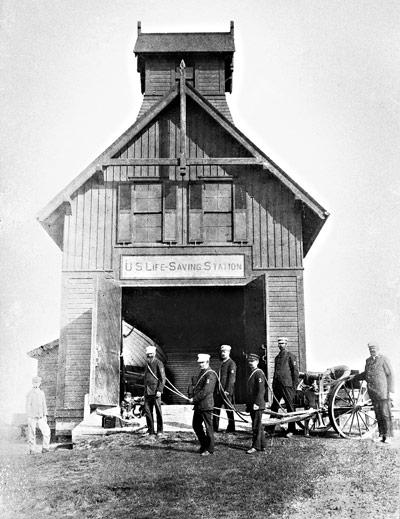Board Says Welcome and Farewell
Board Says Welcome and Farewell

The end of the fiscal year meeting of the East Hampton Village Board on July 31 was a bittersweet one, as board members accepted the retirement of Larry Cantwell, who had been village administrator for 32 years, and welcomed Becky Molinaro, who succeeds him. She had assumed her new role on May 1.
Mr. Cantwell, who is running for East Hampton Town supervisor, was praised by Mayor Paul F. Rickenbach Jr., board members, and others who attended the meeting. “For myself and the board of trustees, I’m personally saddened by Larry’s departure from service to our village,” the mayor said. “Remembering his tenure, I recall the consummate public official whose professional acumen, sage advice, and deep caring to do the right thing for the public always came through, tempered with good common sense.” In a reference to Mr. Cantwell’s campaign for election in November, the mayor predicted that “the stars are in alignment to achieving that goal.”
Welcoming Ms. Molinaro, the mayor said, “You’ve got some shoes that have to be filled, but we have no doubt that you are going to carry the mantle in the continuing condition and reputation of the village.”
In turn, the board members added words of goodbye. Barbara Borsack, the deputy mayor, recalled her long friendship with Mr. Cantwell, saying he “was always very fair. He was always there to listen. He was great about meeting the needs that we had.” The longest serving trustee, Elbert Edwards, commenting that Mr. Cantwell had “always worked in a very professional manner,” said, “We wish you good luck going forward. We’ll miss you.”
“I’m sure you’re going to take all the experiences that you’ve gained over the last 32 years,” said Richard Lawler, “and put them to good use.”
“I am very appreciative to all the help you’ve given me for the two years that I’ve been on the board,” Bruce Siska said. “I didn’t know what I was getting into, but you sure straightened me out in a hurry.”
Praise for Mr. Cantwell was also voiced by others at the meeting, among them Janet Dayton, representing the Ladies Village Improvement Society, Stephen Tekulsky, who is running for town justice with Mr. Cantwell on the Democratic line, Kathy Cunningham, executive director of Village Preservation Society, Mary Ella Moeller, an active participant in East Hampton School District meetings, and Chief Gerard Larsen of the Village Police Department.
After noting that Ms. Molinaro’s first months as village administrator had “been terrific,” and saying the board would be proud of her, it was Mr. Cantwell’s turn to thank his colleagues.
“I’m very grateful for the past 32 years to the mayor, the trustees, prior mayors, and trustees, who I’ve had the privilege to serve, to the employees of the village, and the residents of the village,” Mr. Cantwell said. Calling the village a model for small, community government, he said the village is “blessed with caring, dedicated employees who go above and beyond . . . and really care about their role and the work that they do.”
Members of the board, he said, “make decisions based upon what they think is in the community’s best interest. There’s no ax to grind; there’s no party politics. They’re simply working to find the best solution for the community.” He also thanked the emergency services and firefighting volunteers.
An “unusual and unique level of trust” exists between the government and the residents and taxpayers, he said. “There’s a bond that I can’t explain except that I know it exists.”
Along with the formal acceptance of Mr. Cantwell’s retirement and Ms. Molinaro’s appointment, the board unanimously adopted employment agreements for the year with those who are remaining in their posts. They were Ken Collum and Dan Reichl, code enforcement officers; Scott Fithian, superintendent of the Department of Public Works, Robert Hefner, director of historic services, Michael Tracey, police captain, and Chief Larsen.



